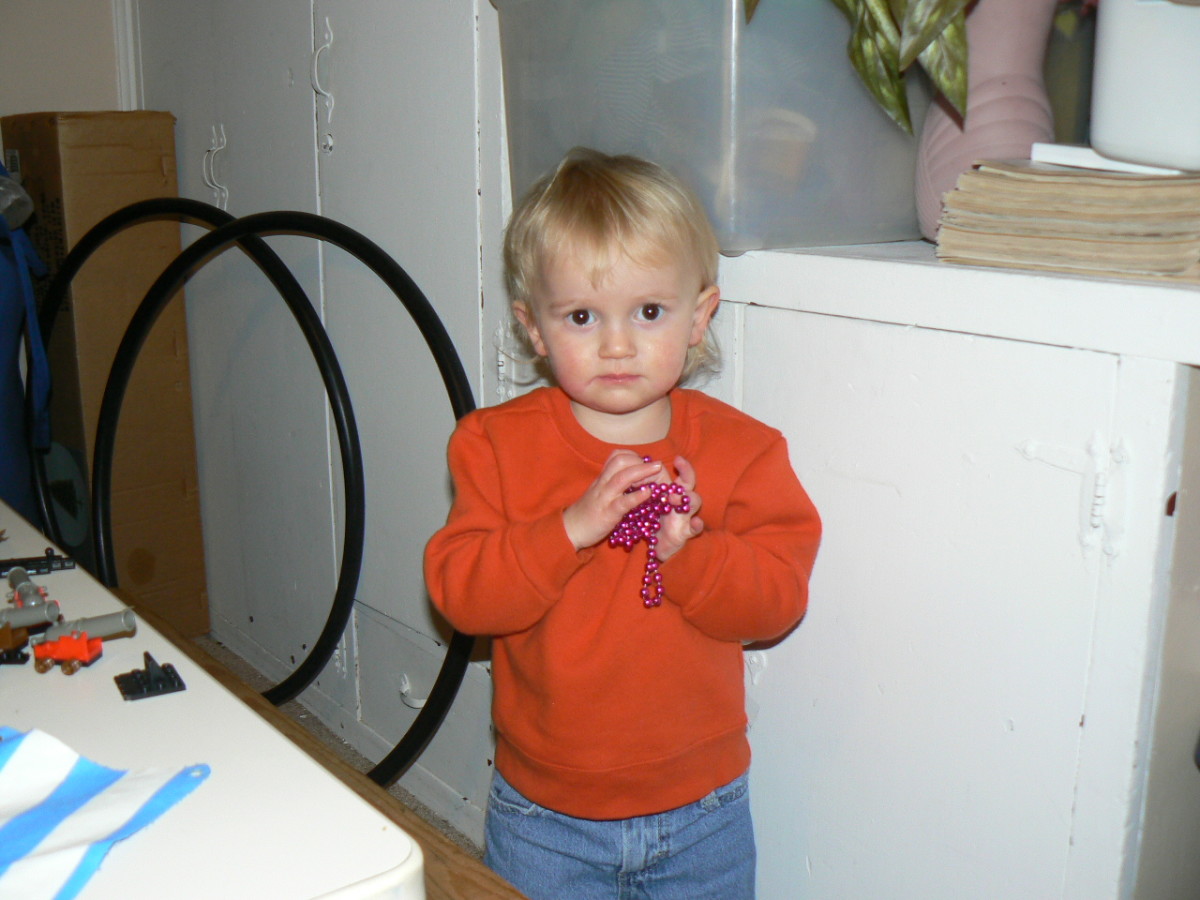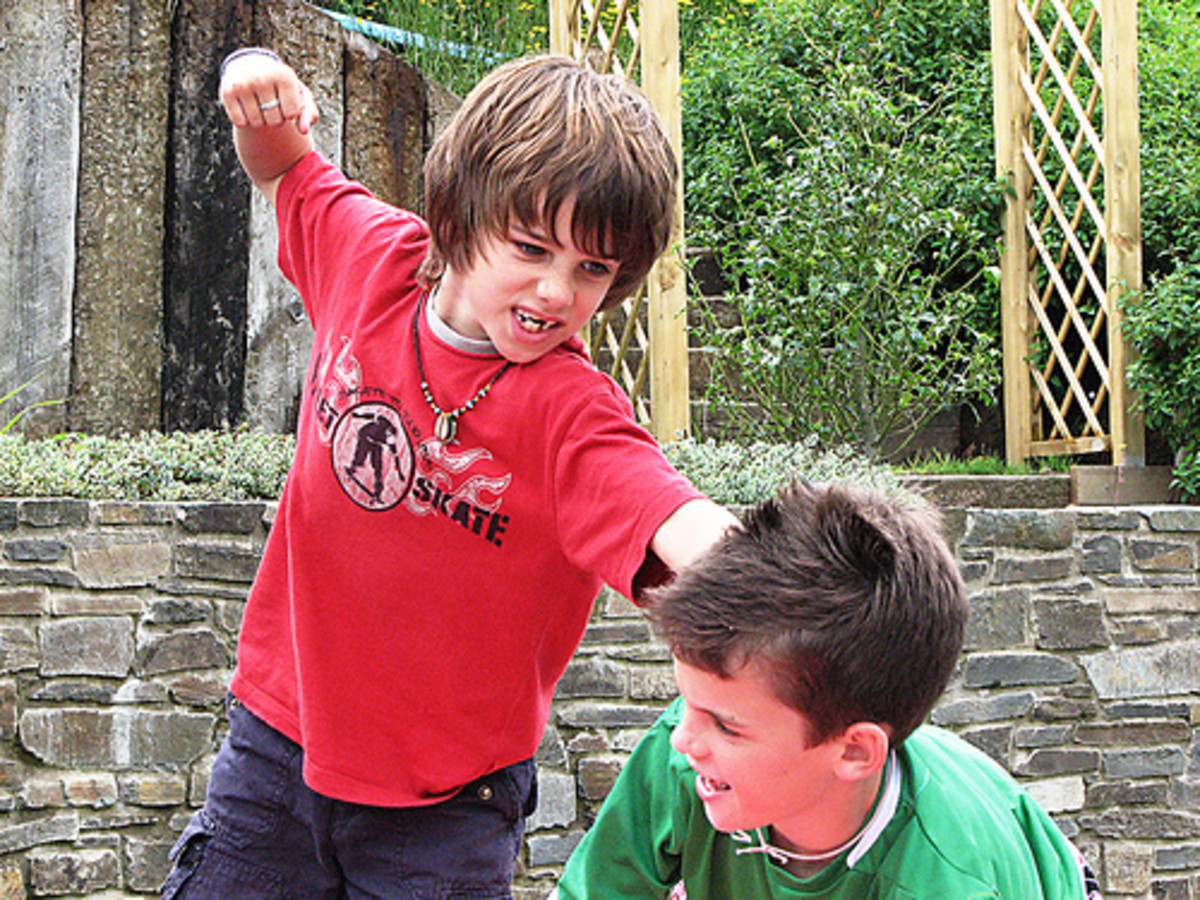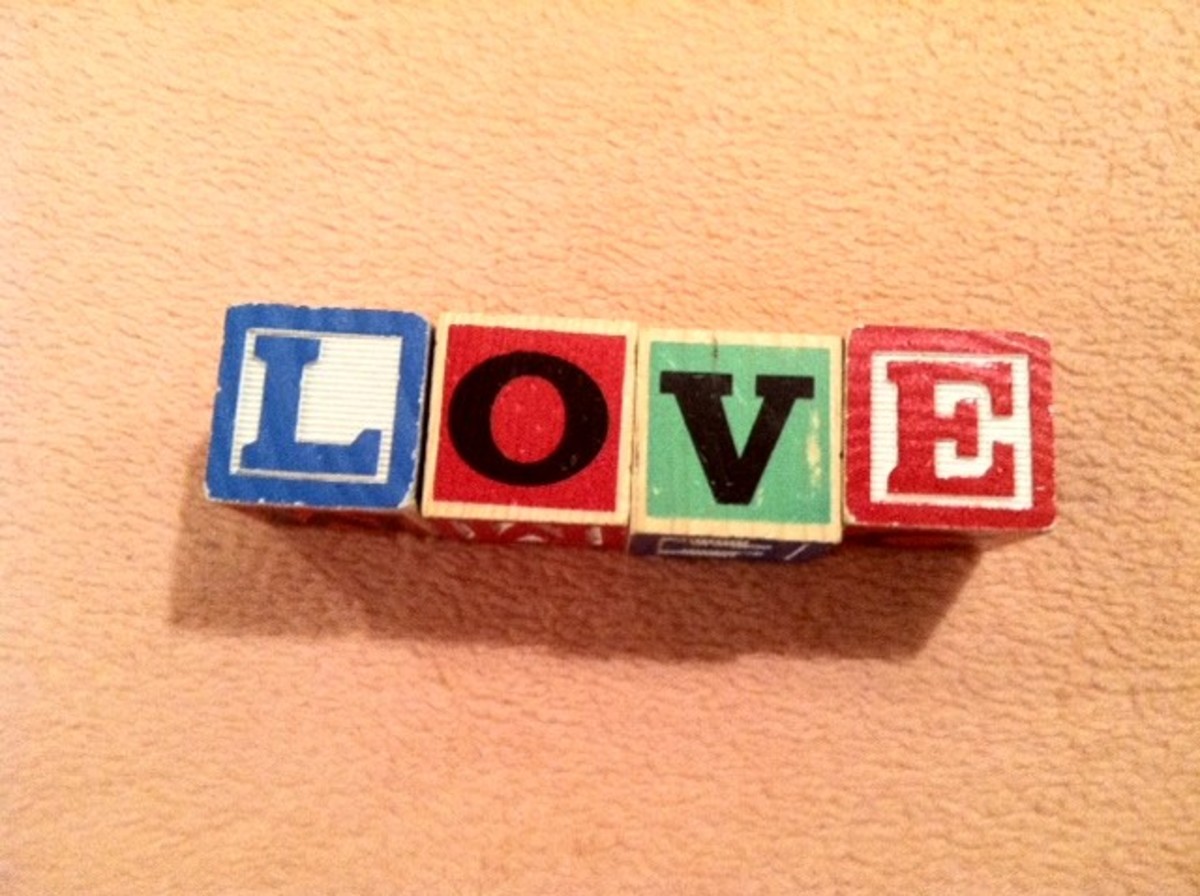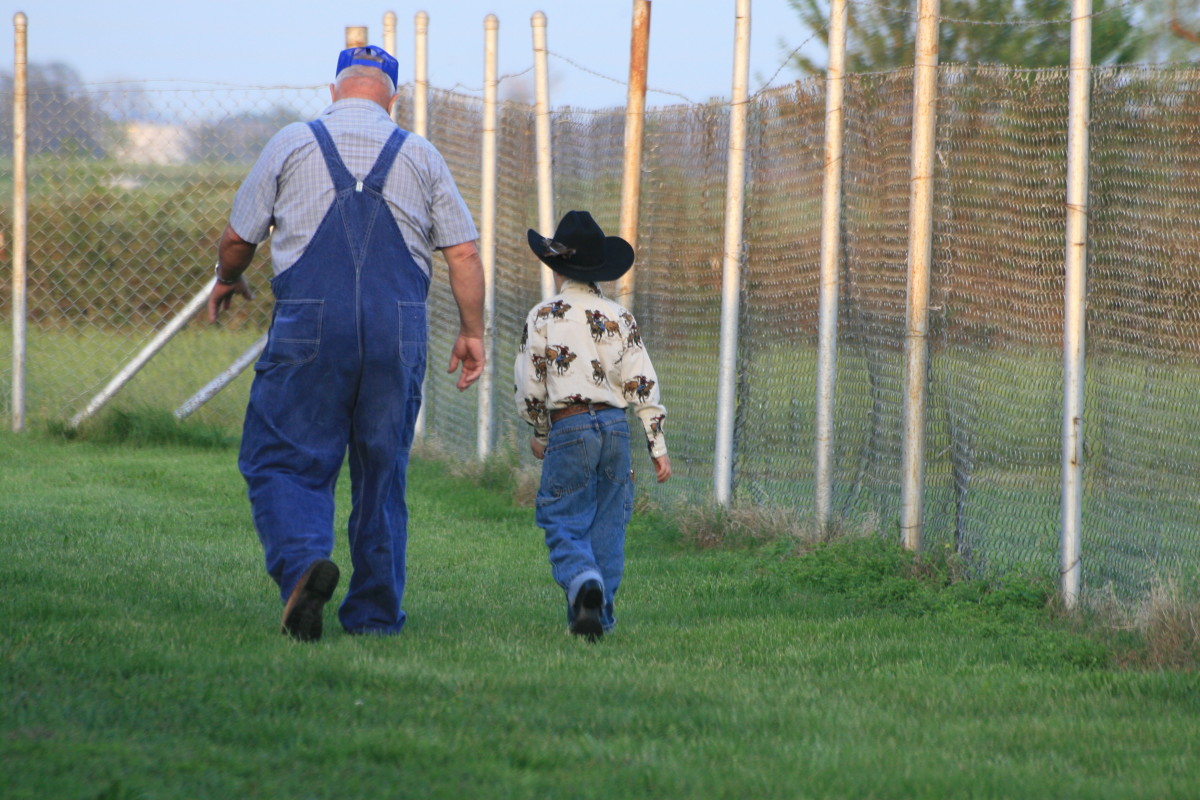Best Ways to Discipline Your Child

I’ve gone back to reading some of my trusty parenting help books recently because my 3-year-old is making me want to pull out my hair lately. I read some very interesting, thought-provoking information the other day about how to deal with kids and help encourage them to be good because they want to and not because they are forced to. It was eye-opening for me and I thought I’d try and summarize what I learned here for all the frazzled parents of kids who are (sometimes) driving us crazy!
A lot of the following information comes from Kids Are Worth It by Barbara Coloroso as well as from The Discipline Book by Dr. Sears, from personal experience, and advice from my sister. I hope you find the following information as interesting as I did.
First, the bad news. Actually, it’s not really bad news; it’s a discussion of what many parents do wrong to help control their child’s behavior. After reading this I began to worry that I was doing a lot wrong, but I was reassured as I continued to read and got to the “good news” - better alternatives…so if while reading the first part you get discouraged, please keep reading and see if you find the information eye-opening like I did.
"If you want to prevent your child from developing a normal responsible conscience which will enable him to control himself, build your relationship with him on a punitive basis. Control his behavior primarily by spanking and scolding, especially scolding."
– Ross Campbell, How to Really Love Your Child
Threats, Punishment, Bribes, and Rewards
Sound familiar? Many of us parents are guilty of using one or more – or all – of these tactics to get our kids to behave. These tools work; however, they also keep a child dependent and fearful – dependent on a parent for rewards given for positive behavior, and fearful of whatever punishment that parent might give them for negative behavior.
All parents (should) want their children to become compassionate, creative, ethical people who have a strong sense of self and know how to think for themselves and not just know what to think because it’s been ingrained. We want them to be curious about the world around them, to not be easily led, be willing to act with integrity and not do things just to please someone. Threats, punishments, rewards and bribes keep control in the hands of parents and give children the message that “I, as an adult, can and will make you mind.” The goal being instant obedience. Sometimes this way does not allow the parent(s) to see their children as unique individuals who have the right to express their own needs and be respected.
When faced with these types of controls, kids will respond in one of three ways:
1. Fear – the child may be afraid to fight back or to make a mistake that will bring on a greater wrath from the parent. (“If I don’t clean up my room, he’ll make me go to bed without dinner again.”)
2. Fight back – the child may attack the parent or take the anger out on others. (“If mom can hit me for doing something wrong, then I don’t see why I can’t hit my little sister when she does something wrong.”)
3. Flee – the child may run away, mentally or physically, to escape a controlling parent. This child may stop letting the parent into their world.
Threats & Punishments
Threats and punishment arouse anger and resentment and invite more conflict; they exacerbate wounds instead of heal them. They don’t consider feelings or look for solutions. They are, by their nature, punitive. They demonstrate a parent’s ability to control a child by force and they teach children that might makes right. They deprive a child of the opportunity to understand the consequence of her actions, to fix what she did, or to empathize with the person she may have harmed.
Hitting a child for drawing on the wall doesn’t teach him not to do it, it teaches him not to get caught. It also ends up becoming a tool that he himself can use when a sibling won’t give him back his toy. Aggression begets aggression.
Bribes & Rewards
Rewards and punishments are two sides of the same coin. Control tactics have the objective to compel or prevent actions and force kids to behave in an adult-approved way. As a result, kids learn to do only what they’re told without question, not because they think it’s the right thing to do – but to get the reward or to avoid the punishment.
Children who are consistently bribed and rewarded are likely to become grown-ups who are overly dependent on others for approval and recognition, lack self-confidence and sense of responsibility. These kids grow up always asking or wondering “What’s in it for me?”; “What’s the payoff?”; “Will it get me what I want?”; “Did you see me do it?”; “Does it count for anything?”
Rewards increase the likelihood that they will need to be used again and again, and they’ll have to get bigger and better. They change the parent-child relationship to one of rewarder and rewardee; the child no longer sees the parent as someone to relate to, learn from, confide in, or question. Instead this child sees the parent as someone he needs to mind, or else!
Bribes and rewards may help to control or modify your child’s behavior for a short time, but his spirit has learned the wrong lesson for a lifetime. These tools can give parents temporary good behavior, but it is at the expense of raising less responsible, less resourceful, less resilient, less compassionate persons who will just “do to please” and are praise-dependent, less generous and less committed to excellence.
Okay, now for the good news - the better alternatives…
“…And the greatest thing we can do is let somebody know that they are loved and capable of loving.”
– Fred Rogers, Mister Rogers’s Neighborhood
Encouragement, Feedback, and Discipline
Children simply can’t thrive on bribes, threats, rewards and punishments. If you are in need of getting rid of these tools from your toolbox, then you shall need something to replace them. Replace them with encouragement, feedback and discipline.
Encouragement
At this point you may be afraid to open your mouth for fear of ruining your child’s self-esteem – well, you don’t have to be silent, although silence does have its place. Sometimes all a child needs is for you to be present and a smile or hug. Other times, your spontaneous delight, enthusiasm or applause can do wonders for a child. The key is that is be truly spontaneous and that your level of excitement equals theirs. If your daughter jumps off the toilet and claps and waves bye-bye to her bowel movement, join in her excitement!
Encouragement is non-judgmental, it emphasizes the child’s importance by letting them know that you have confidence and trust in them. It imparts courage and confidence in the child. It helps a child develop a sense of pride and to be motivated. There’s absolutely no coercion or desire to control behavior.
Whether your encouragement comes before a child’s attempt at something new, when he’s in the middle of struggling with a skill, or after accidentally breaking something, the message that comes through is that they can do well and feel good about themselves, even in the face of adversity.
“He has the right to criticize who has the heart to help.”
– Abraham Lincoln
Feedback
Good feedback comes in three forms: compliments, comments, and constructive criticism. The biggest difference between a compliment and encouragement is that a compliment is contingent on a child doing something specific; the purpose is to show appreciation (“Thank you for removing those toys from the living room so our guests can sit comfortably”); recognize persistence (“I know it was hard to get that doll’s dress on all by yourself, but you kept trying and you did it!”); or acknowledge a job well done (“You did a great job helping me set the table, you folded the napkins so well”). Compliments are specific and directed at the act or deed, not the child. If your compliment is meant to manipulate, to control behavior, then it is not sincere and will not benefit your child.
Comments are neutral feedback – they are statements without any emotions or ulterior motives. They are intended to instruct, not attack. They contain no sarcasm, ridicule or intent to embarrass. Here’s an example: “Check your list before we leave to school to make sure you have what you need” beats saying “You would forget your head if it weren’t attached!”
Constructive criticism: We all want our children to feel good about themselves, so we as parents sometimes give them tons of praise and leave out criticism for fear of hurting our child’s feelings. At the opposite extreme, some parents get tired of dealing with the same mistakes over and over again and they dole out toxic criticism, attacking the whole child rather than the mistakes.
Just as compliments are directed at the deed itself, constructive criticism specifically attacks the mistake or the problem, not the child. Constructive criticism’s focus is on the actions that a kid can change and mistakes that can be fixed. Together with compliments and comments, it can help kids develop realistic and optimistic self-awareness. When giving constructive criticism, you’ll get a lot farther by saying things like, “That’s not right” rather than “That’s wrong.” The former encourages the child to try and correct what’s not right, while the latter only discourages. Constructive criticism can help a child accept that mistakes are for owning, fixing and learning from.
Discipline
Discipline is not something we do to children; it’s a process that gives life to learning. The goal is to instruct, teach, guide, and help children develop self-discipline. It comes from inside; it’s not an imposition from the outside. The process of discipline does 4 things that punishment can’t do:
- Show children what they have done wrong.
- Give them ownership of the problem.
- Help them find ways to solve the problem.
- Leave their dignity intact.
Discipline involves real-world consequences, or intervention, or a combination of the two. Real-world consequences either happen naturally or are reasonable consequences that are intrinsically related to the action. Here are a couple of examples:
- If a child goes outside on a chilly day refusing to wear her coat, she’ll get cold (natural)
- If a teenager wrecks the car, he may use it again as soon as he has a plan for getting it fixed (reasonable)
If the natural consequences are life-threatening, morally threatening, or unhealthy, then you as a parent must, of course, intervene. You wouldn’t let your 2-year old run out into the street to learn from natural consequences, right? No, you have a responsibility to intervene to keep your child safe, so you keep her in a place where you can see and prevent her from running out into the street.
If natural consequences are nonexistent or would not support your child learning from it, then parents must help out with reasonable consequences. Many parents find it difficult to come up with consequences that are meaningful and appropriate. Natural consequences just happen, but reasonable ones take a little bit of reasoning, but shouldn’t take a lot of energy or struggling. With your guidance and support, and the help of the four discipline steps above, the issue is for your child to solve a problem he or she has created and to learn from the entire experience.
When in doubt, think RSVP:
- R – Is it reasonable? Does it make sense and is it appropriate? If a toddler breaks a glass, it’s not reasonable to make her pick up the broken pieces of glass, but it would be reasonable to ask her to hold the garbage bag for you to place the shards in.
- S – Is it simple? If you find yourself drawing up a 1-page contract for your teenager’s use of the car, you’re asking for trouble.
- V- Is it valuable as a learning tool? Buying her friend a new book to replace the one your daughter ruined while trying to read and remove nail polish at the same time can teach your child not to tackle both tasks at the same time. Berating her for being irresponsible won’t teach that to her, neither will telling her that she’s no longer allowed to borrow books from anyone.
- P – Is it practical? Telling your child that she can’t go to a school until all her chores are done is not practical, but letting her know that if she doesn’t do her chores before going to school, she’ll have to do them after school before going out to play is practical.
If your consequence isn’t all four of these things, it probably won’t be effective and it could be punishment disguised as a reasonable consequence.
Discipline takes time. Punishment is much quicker and rescuing your child is easier, but over time it won’t work. The time you take to properly discipline will be well worth it as you see your child develop inner discipline. Your child will begin to understand that all of his or her actions have consequences, that he’s capable taking ownership of what he does, and that he’s just as capable of taking full responsibility for the problems he creates – not because of fear of punishment, but because it’s just the right thing to do.









